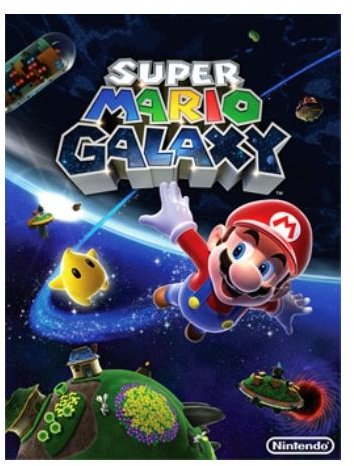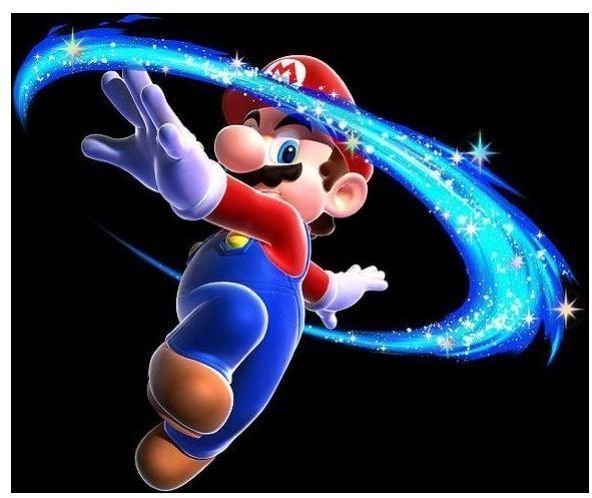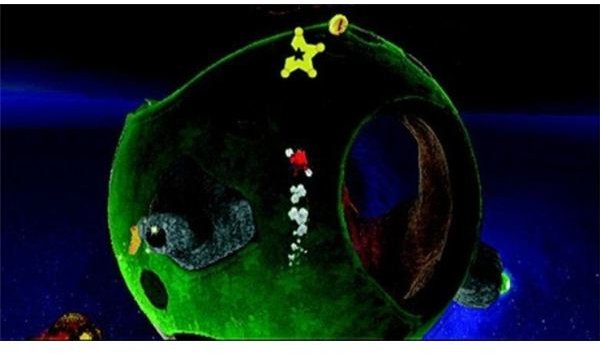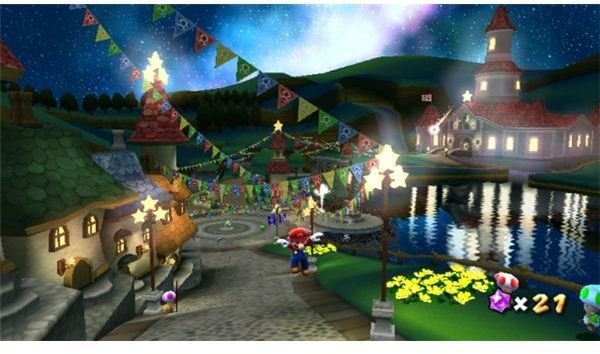Review: Looking at the First Super Mario Galaxy After Playing Super Mario Galaxy 2

Review: Looking Back at Super Mario Galaxy
If you played Super Mario Galaxy before, chances are you played the second game as well. The foundation set by the first 3D Mario game for the Nintendo Wii was so strong that most people who played Super Mario Galaxy couldn’t wait for a sequel. But a grand question lies unanswered. If you happened to play Super Mario Galaxy 2 first, is there any reason to go back and play the first game? Let’s take a look at Super Mario Galaxy, just three years after its release, and see if it’s worth playing these days.
Super Mario Galaxy Storyline (3 out of 5)

With the exception of the Paper Mario series, Nintendo’s mascot has never been at the center of especially complex plotlines. The tale in most Mario games tends to go something like this: Bowser kidnaps Peach. Mario sets out for adventure in search of Peach. Just is served. Though this certainly isn’t gripping storytelling by any means, the Mario series pulls it off with expected charm. This is the story of Super Mario Galaxy, and it neither enhances nor hinders the game. Like most other Mario platformers, it’s just there to add a plot about a kidnapped princess. Admittedly, this story works for the series no matter how many times Nintendo uses it.
Super Mario Galaxy Gameplay (5 out of 5)

The thing that stands out most about Super Mario Galaxy 2 is the depth of its gameplay. Not only do you guide Mario across massive levels, but you seamlessly progress from rearview to sidescrolling to top-down camera angles. If you love that aspect of Super Mario Galaxy 2, then you might be a tad disappointed to see that the first game doesn’t have as much crazy camera gameplay. There are still some head-tilting moments to experience, but nowhere near as many as there are in the sequel.
On the plus side, Super Mario Galaxy still features a great deal of excellent platforming action. Levels are expansive in scope and incredibly engaging. There are secrets to discover and Stars to find by completing both main objectives and sidequests. Mario can also take on a number of different forms such as Bee Mario, Spring Mario, and Flying Mario. Sadly, there’s no Yoshi in this game, but Luigi does play a special role in the game after you manage to obtain 120 Stars.
Controls (5 out of 5)
The control scheme in Super Mario Galaxy is as functional as it’s been in past Mario games. Mario can run, jump, and perform somersaults seamlessly. It’s a lot of fun controlling the red-clad plumber, and this is due to the intuitive nature of the controls. There is also a bit of motion functionality in the game, too. A flick of the wrist results in Mario executing a spin attack that can take out or stun enemies. Additionally, scattered throughout the levels are Star Bits that must be collected to open new levels. Collecting these is as simple as pointing the Wii Remote at the screen.
Graphics (5 out of 5)

Graphically, both Super Mario Galaxy and its successor are perfect examples of what the Wii hardware is capable of if a great deal of effort is put behind a game. Both titles are equally stunning in terms of visuals, and they raise the bar for what Wii games should look like. It’s a shame to think that Nintendo’s shiny console can produce these types of graphics and more developers aren’t putting this much effort into their games.
Sound (5 out of 5)
In terms of sound design, both Mario Galaxy titles are just about equal due to their excellent orchestrated soundtracks. Every theme in both games sounds great, and hearing classic Mario themes played with beautiful orchestral instruments truly adds to the grand feel of both games. Bravo, Nintendo!

Lasting Value (4 out of 5)

Platformers aren’t known for their length, and Super Mario Galaxy is no exception. Like its sequel, Mario’s premier adventure in space isn’t too long-lasting and takes about 10 hours to get through. Not a terrible value by any means, but not an incredibly long-lasting one either. Luckily, there is a good amount of replay value in the game, and if your goal is to collect all 120 of the game’s Stars, then you should be busy for some time. Additionally, there’s a nice reward for you if you do choose to collect all of the game’s Stars.
Super Mario Galaxy Review - Overall Score (5 out of 5)
If you played Super Mario Galaxy 2 and for some reason missed that game’s predecessor you may be asking yourself, “Should I go back and play the first Super Mario Galaxy?” The answer, plain and simple, is yes. Definitely. As awesome as Super Mario Galaxy 2 may be, the first game stands out as the vehicle for which the formula used in the second game was propelled. It is not only an excellent addition to the Mario franchise, but a near-perfect game to add to your Wii library.
